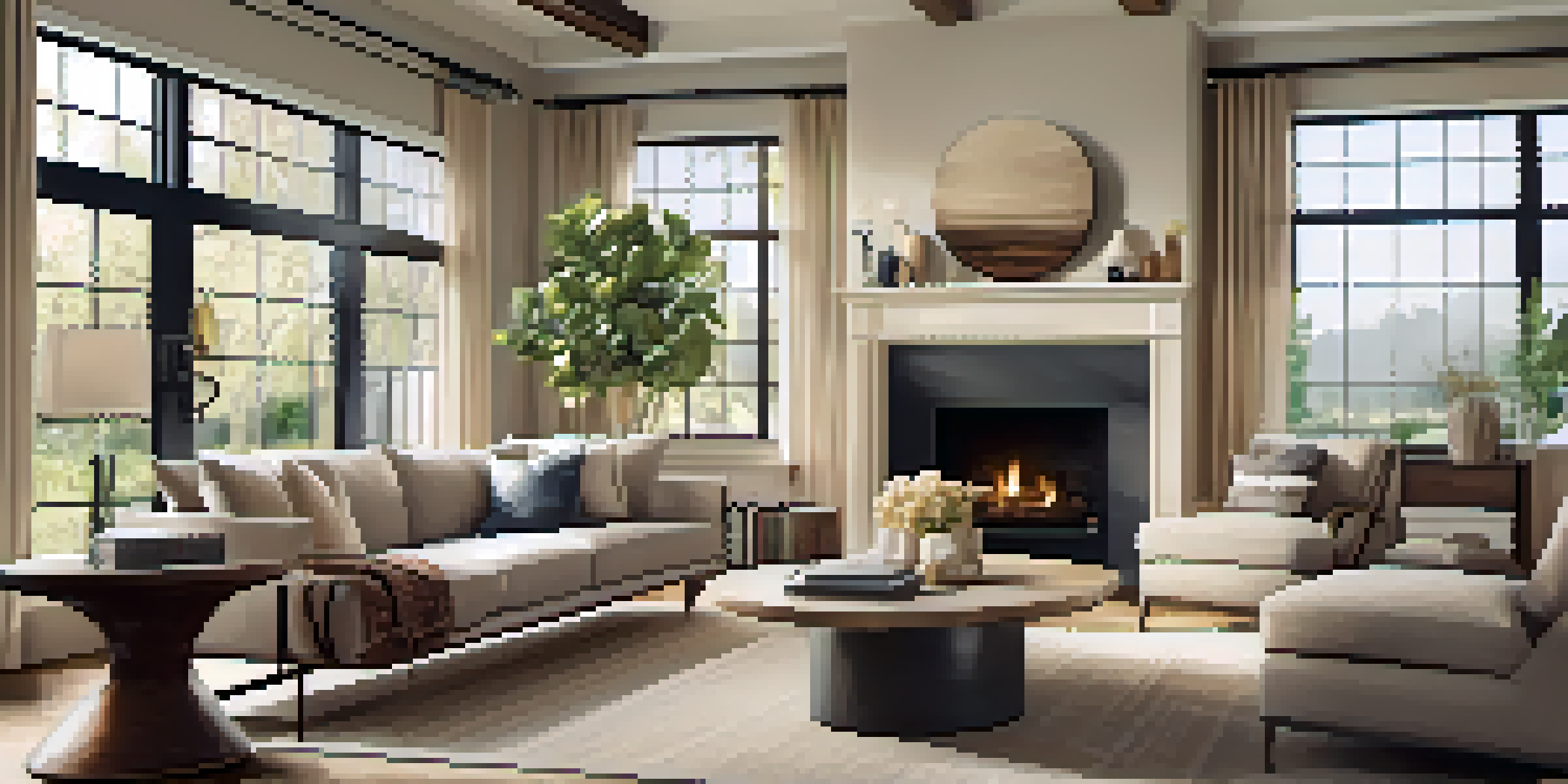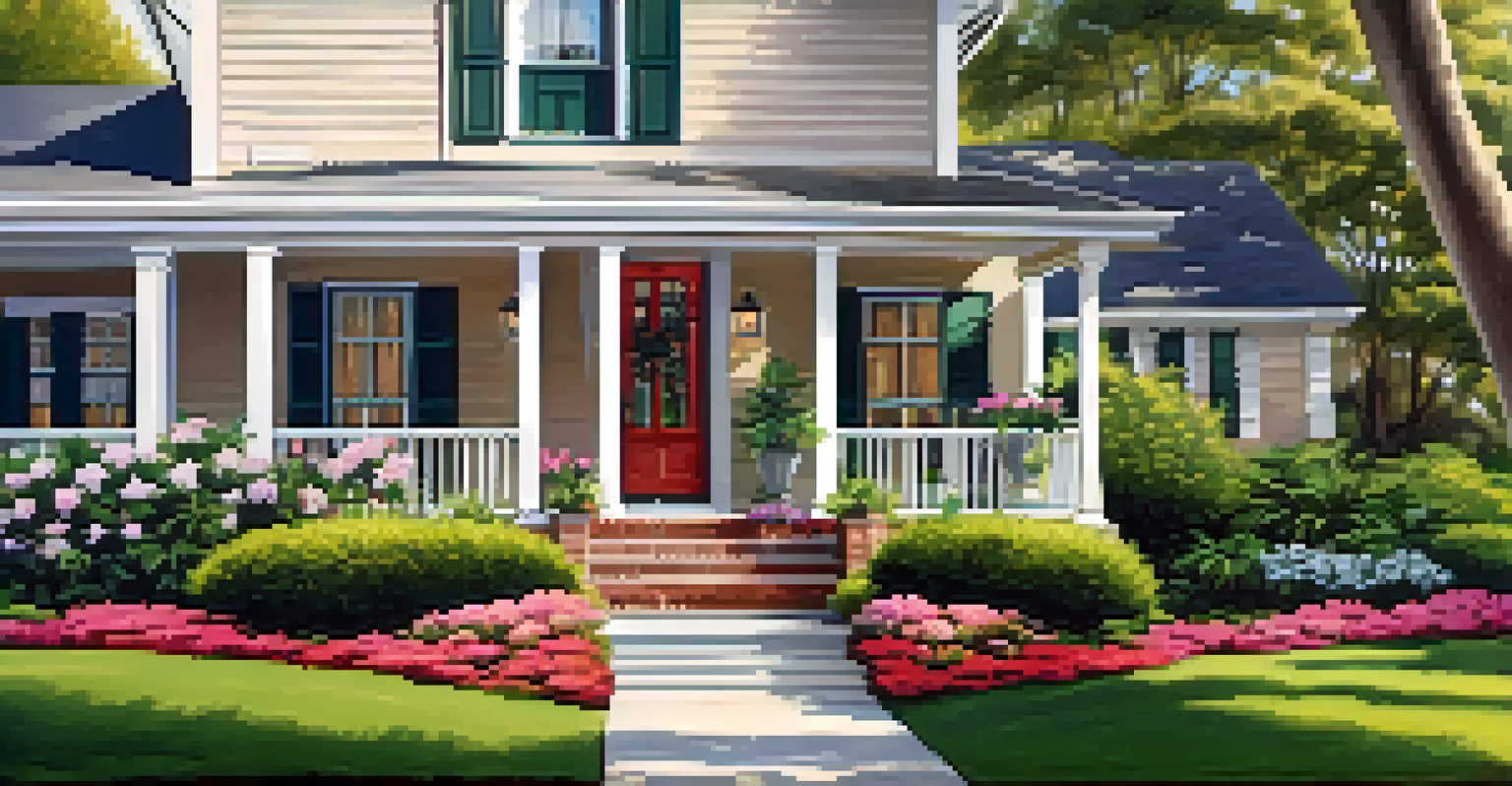Staging to Sell: How to Present Your Home Effectively

The Importance of Home Staging for Selling
Home staging is all about showcasing your property in its best light. When potential buyers walk through, they need to envision themselves living there. A well-staged home not only attracts more buyers but can also lead to quicker sales and even higher offers.
Home staging is not about decorating; it’s about creating a welcoming environment that allows potential buyers to envision their future in your home.
Think of staging as setting the scene in a play; it’s about creating a narrative that resonates with the audience. By highlighting the strengths of your home and minimizing its weaknesses, you create an emotional connection that can drive interest.
In today's competitive market, staging can be the difference between a listing that sits idle and one that generates buzz. It’s an investment that pays off, often resulting in a higher return than the initial staging costs.
Decluttering: The First Step in Staging
Before you even think about furniture placement, decluttering is crucial. A cluttered space can feel chaotic and uninviting, making it hard for buyers to see the potential of your home. Start by removing personal items, excessive decorations, and anything that doesn’t serve a purpose.

You can think of decluttering as giving your home a fresh canvas. By clearing out unnecessary items, you allow the architecture and features of your home to shine. This makes it easier for buyers to imagine their own belongings in the space.
Staging Boosts Home Appeal
Home staging showcases your property effectively, creating an emotional connection that can lead to quicker sales and higher offers.
Once you’ve cleared out the clutter, consider organizing what’s left. Neat, organized spaces give off a sense of tranquility and order. This simple step can drastically improve the perceived value of your home.
Enhancing Curb Appeal: First Impressions Matter
Curb appeal is your home’s first impression, and we all know how important that is! It’s the exterior of your home that invites potential buyers in for a closer look. Simple upgrades like fresh paint, manicured lawns, and attractive landscaping can make a world of difference.
You never get a second chance to make a first impression.
Imagine walking up to a house with a clean driveway, vibrant flowers, and a well-maintained front porch. It feels welcoming, right? These visual cues can set a positive tone before buyers even step through the door.
Don’t underestimate the power of lighting and staging outdoor spaces, too. Adding cozy seating or decorative elements can help buyers envision themselves enjoying those areas, enhancing their overall experience.
Creating a Welcoming Interior Atmosphere
Once you’ve tackled the exterior, it’s time to focus on the interior. A welcoming atmosphere is key to making potential buyers feel at home. Consider using neutral colors on the walls, which appeal to a broader audience and allow buyers to envision their own style.
Lighting plays a significant role in creating ambiance as well. Make sure each room is well-lit by utilizing natural light and strategically placed lamps. A bright, airy space is more inviting and can help buyers feel a connection to the home.
Decluttering Sets the Stage
Clearing out personal items and unnecessary clutter allows potential buyers to envision their own lives in the space.
Lastly, don’t forget the power of scent! Subtle fragrances, like freshly baked cookies or a hint of essential oils, can create a warm and inviting environment that lingers in buyers' minds long after they leave.
Furniture Arrangement: Maximizing Space
How you arrange your furniture can greatly impact how buyers perceive space in your home. Aim for a layout that highlights the flow of the home and allows easy movement. Avoid overcrowding a room with too much furniture; instead, choose key pieces that complement the space.
Think of your furniture as a way to guide buyers through the home. Create functional areas that showcase the purpose of each room, whether it’s a cozy reading nook or an inviting dining space. This helps buyers visualize how they would use the space.
Additionally, consider the scale of your furniture. Oversized pieces can make a room feel cramped, while smaller items can create an illusion of more space. Striking the right balance is essential for making your home feel open and inviting.
Highlighting Key Features of Your Home
Every home has unique features that can be attractive to buyers. Whether it’s a fireplace, built-in shelving, or beautiful hardwood floors, these elements should be highlighted during the staging process. Use furniture placement and decor to draw attention to these selling points.
For example, if you have a stunning fireplace, arrange seating to face it, creating a focal point that invites conversation. Similarly, if your home has large windows with a beautiful view, keep window treatments light and airy to let in as much natural light as possible.
Curb Appeal Creates First Impressions
Enhancing your home's exterior with simple upgrades invites buyers in and sets a positive tone for their experience.
Don’t shy away from using art or decor that complements these features. A well-placed piece can enhance the overall aesthetic and make the space feel more inviting, ultimately leaving a lasting impression on buyers.
The Final Touches: Accessories and Decor
Once the major staging elements are in place, it’s time to add those final touches. Accessories like cushions, throws, and artwork can inject personality into your home without overwhelming it. Choose items that are stylish yet neutral, appealing to a wide range of tastes.
Plants are another fantastic way to breathe life into your space. They add color and warmth, making rooms feel more inviting. Just be sure to choose low-maintenance options that look fresh and vibrant throughout showings.

Lastly, keep it simple. Too many accessories can create a cluttered look, which is counterproductive to your staging efforts. Aim for a balanced aesthetic that feels airy and welcoming, allowing buyers to focus on the home itself.